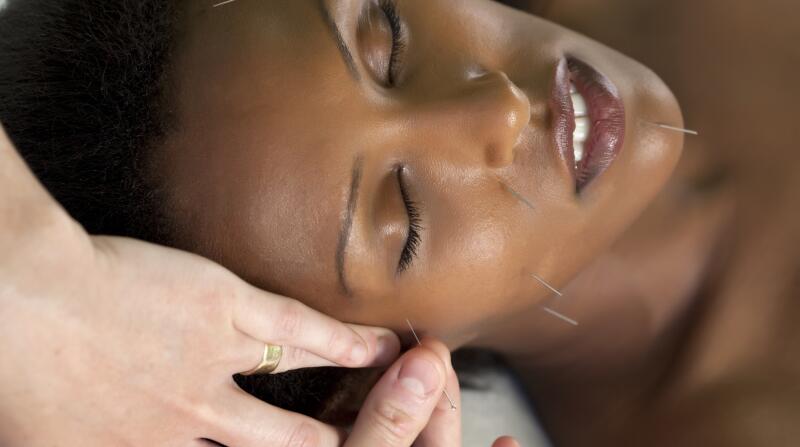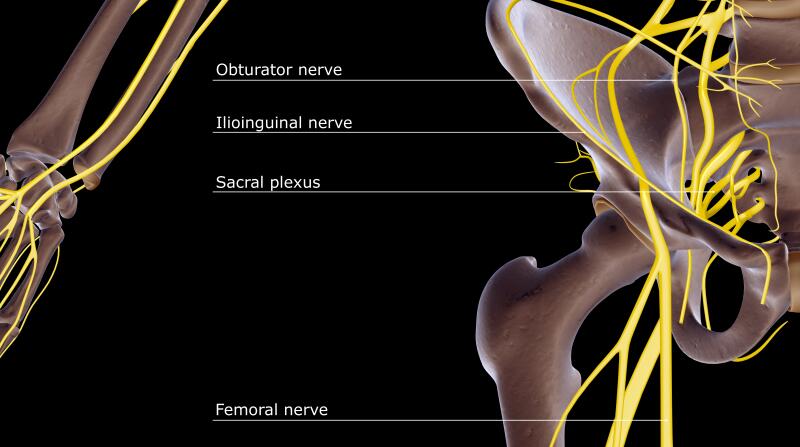Top Treatments for Overactive Bladder

Medically Reviewed By William C. Lloyd III, MD, FACS
Written By Healthgrades Editorial Staff on September 14, 2022
Many treatments can curb overactive bladder, starting with a few simple lifestyle changes. If these don’t work, medications and surgery are available. Read on to learn about the top treatments for overactive bladder.
-
 Lifestyle ChangesIt’s just not how much you drink—it’s what you drink! Avoid or limit beverages that can irritate the bladder, such as coffee, tea, carbonated drinks, and alcohol. Also, stay away from spicy and acidic foods. Try not to drink much after dinner to lessen nighttime trips to the bathroom, but don’t drink too little, either. Aim for 3 to 4 glasses of water per day to stay hydrated. Maintain a healthy weight, exercise, and eat fiber to avoid constipation. These simple changes may help reduce your overactive bladder symptoms.
Lifestyle ChangesIt’s just not how much you drink—it’s what you drink! Avoid or limit beverages that can irritate the bladder, such as coffee, tea, carbonated drinks, and alcohol. Also, stay away from spicy and acidic foods. Try not to drink much after dinner to lessen nighttime trips to the bathroom, but don’t drink too little, either. Aim for 3 to 4 glasses of water per day to stay hydrated. Maintain a healthy weight, exercise, and eat fiber to avoid constipation. These simple changes may help reduce your overactive bladder symptoms. -
 Bladder Boot CampIf you can contract your pelvic floor muscles, you may be able to train your bladder to “hold it.” Schedule set times to urinate each day instead of going when you feel the urge. In the beginning, you may only be able to hold it a few minutes, but in time you could go two hours or more between bathroom visits. Stick to your schedule: try even when you don’t have the urge. When you do go, give your bladder time to fully empty.
Bladder Boot CampIf you can contract your pelvic floor muscles, you may be able to train your bladder to “hold it.” Schedule set times to urinate each day instead of going when you feel the urge. In the beginning, you may only be able to hold it a few minutes, but in time you could go two hours or more between bathroom visits. Stick to your schedule: try even when you don’t have the urge. When you do go, give your bladder time to fully empty. -
-
 Pelvic Floor Muscle ExercisesKegel exercises help strengthen the muscles that control urination. This can lessen or prevent the bladder’s involuntary contractions. There are two ways to do Kegels—slowly squeezing, lifting and holding the pelvic floor muscles, or doing quick squeezes and contractions. You can do Kegel exercises almost anywhere, even when you are sitting in your car or at your desk. Your doctor can recommend the type of Kegel exercises to help you.
Pelvic Floor Muscle ExercisesKegel exercises help strengthen the muscles that control urination. This can lessen or prevent the bladder’s involuntary contractions. There are two ways to do Kegels—slowly squeezing, lifting and holding the pelvic floor muscles, or doing quick squeezes and contractions. You can do Kegel exercises almost anywhere, even when you are sitting in your car or at your desk. Your doctor can recommend the type of Kegel exercises to help you. -
 Alternative and Complementary TherapySome people find symptom relief by using biofeedback and acupuncture. In biofeedback, measuring devices provide information to you about your body. With time, you may learn to control your bladder’s response to urges. Acupuncture involves the placement of very thin, disposable needles in various points on your body. Talk to your doctor about these treatment options to see if they can help you. You can find an acupuncturist at Healthgrades.com, but ask the practitioner ahead of time whether they have experience treating overactive bladder successfully.
Alternative and Complementary TherapySome people find symptom relief by using biofeedback and acupuncture. In biofeedback, measuring devices provide information to you about your body. With time, you may learn to control your bladder’s response to urges. Acupuncture involves the placement of very thin, disposable needles in various points on your body. Talk to your doctor about these treatment options to see if they can help you. You can find an acupuncturist at Healthgrades.com, but ask the practitioner ahead of time whether they have experience treating overactive bladder successfully. -
 MedicationsLifestyle changes alone may not be enough to control your symptoms. There are several types of medicines, including anticholinergics (also called antimuscarinics) that relax the bladder muscles and may lessen your urge to urinate. They come in many forms, including pills, patches, gels, and long- or short-acting formulas. Your doctor may try anticholinergic medicines first. Anticholinergics can interact with other drugs, so be sure your doctor is aware of all your medications before prescribing. If they don’t work or if side effects like dry mouth, dry eyes, and constipation are intolerable, there are other types of medications that may help.
MedicationsLifestyle changes alone may not be enough to control your symptoms. There are several types of medicines, including anticholinergics (also called antimuscarinics) that relax the bladder muscles and may lessen your urge to urinate. They come in many forms, including pills, patches, gels, and long- or short-acting formulas. Your doctor may try anticholinergic medicines first. Anticholinergics can interact with other drugs, so be sure your doctor is aware of all your medications before prescribing. If they don’t work or if side effects like dry mouth, dry eyes, and constipation are intolerable, there are other types of medications that may help. -
 Botulinum Toxin (Botox)Botox, a common medication for cosmetic procedures to smooth fine lines and wrinkles, may also work for certain people with severe urge incontinence. Your doctor injects Botox into your bladder tissue. Botox partially paralyzes the bladder muscles and improves bladder capacity, so the muscles relax more and contract less. Repeat injections are necessary every 6 to 9 months.
Botulinum Toxin (Botox)Botox, a common medication for cosmetic procedures to smooth fine lines and wrinkles, may also work for certain people with severe urge incontinence. Your doctor injects Botox into your bladder tissue. Botox partially paralyzes the bladder muscles and improves bladder capacity, so the muscles relax more and contract less. Repeat injections are necessary every 6 to 9 months. -
-
 Sacral Nerve StimulationSacral nerve stimulation helps control overactive bladder symptoms by regulating nerve impulses to the bladder. During treatment, your doctor implants a thin wire near the sacral nerves. The sacral nerves carry signals to the bladder. A device connected to the wire sends electrical impulses to the bladder and may help reduce your symptoms.
Sacral Nerve StimulationSacral nerve stimulation helps control overactive bladder symptoms by regulating nerve impulses to the bladder. During treatment, your doctor implants a thin wire near the sacral nerves. The sacral nerves carry signals to the bladder. A device connected to the wire sends electrical impulses to the bladder and may help reduce your symptoms. -
 SurgerySurgery for overactive bladder may be an option for people with severe overactive bladder who don’t respond to other treatments. There are a variety of effective surgical procedures. A urethral sling improves urinary retention. Bladder augmentation surgery uses a piece of the bowel to make the bladder larger. This allows it to store more urine. Surgery to remove the bladder is a last-resort option. Although highly effective at treating overactive bladder, surgery remains a final option due to potential side effects and surgical risks.
SurgerySurgery for overactive bladder may be an option for people with severe overactive bladder who don’t respond to other treatments. There are a variety of effective surgical procedures. A urethral sling improves urinary retention. Bladder augmentation surgery uses a piece of the bowel to make the bladder larger. This allows it to store more urine. Surgery to remove the bladder is a last-resort option. Although highly effective at treating overactive bladder, surgery remains a final option due to potential side effects and surgical risks. -
 Key TakeawaysAn overactive bladder is a common condition affecting millions of Americans. But it is not a normal part of aging. If you have an overactive bladder, talk to your doctor. There are many effective treatment options. Together, you can determine which treatment is right for you.
Key TakeawaysAn overactive bladder is a common condition affecting millions of Americans. But it is not a normal part of aging. If you have an overactive bladder, talk to your doctor. There are many effective treatment options. Together, you can determine which treatment is right for you.
Top Treatments for Overactive Bladder

























